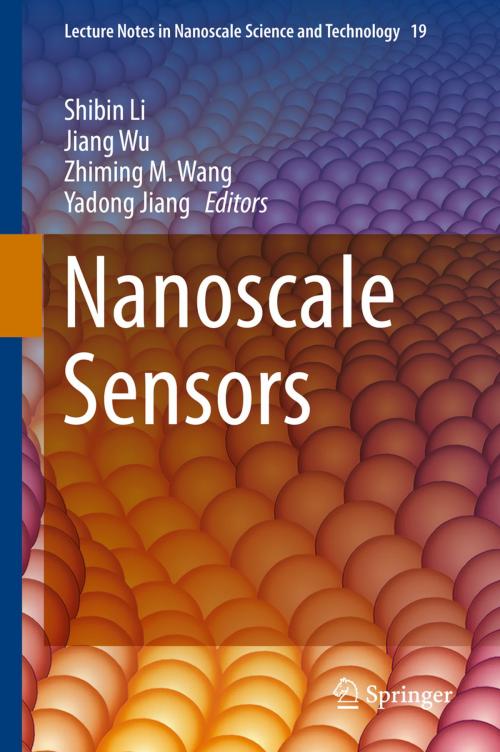| Author: | ISBN: | 9783319027722 | |
| Publisher: | Springer International Publishing | Publication: | January 7, 2014 |
| Imprint: | Springer | Language: | English |
| Author: | |
| ISBN: | 9783319027722 |
| Publisher: | Springer International Publishing |
| Publication: | January 7, 2014 |
| Imprint: | Springer |
| Language: | English |
This book is a comprehensive introduction to nanoscale materials for sensor applications, with a focus on connecting the fundamental laws of physics and the chemistry of materials with device design. Nanoscale sensors can be used for a wide variety of applications, including the detection of gases, optical signals, and mechanical strain, and can meet the need to detect and quantify the presence of gaseous pollutants or other dangerous substances in the environment. Gas sensors have found various applications in our daily lives and in industry. Semiconductive oxides, including SnO2, ZnO, Fe2O3, and In2O3, are promising candidates for gas sensor applications. Carbon nanomaterials are becoming increasingly available as “off-the-shelf” components, and this makes nanotechnology more exciting and approachable than ever before. Nano-wire based field- effect transistor biosensors have also received much attention in recent years as a way to achieve ultra-sensitive and label-free sensing of molecules of biological interest. A diverse array of semiconductor-based nanostructures has been synthesized for use as a photoelectrochemical sensor or biosensor in the detection of low concentrations of analytes. A novel acoustic sensor for structural health monitoring (SHM) that utilizes lead zirconate titanate (PZT) nano- active fiber composites (NAFCs) is described as well.
This book is a comprehensive introduction to nanoscale materials for sensor applications, with a focus on connecting the fundamental laws of physics and the chemistry of materials with device design. Nanoscale sensors can be used for a wide variety of applications, including the detection of gases, optical signals, and mechanical strain, and can meet the need to detect and quantify the presence of gaseous pollutants or other dangerous substances in the environment. Gas sensors have found various applications in our daily lives and in industry. Semiconductive oxides, including SnO2, ZnO, Fe2O3, and In2O3, are promising candidates for gas sensor applications. Carbon nanomaterials are becoming increasingly available as “off-the-shelf” components, and this makes nanotechnology more exciting and approachable than ever before. Nano-wire based field- effect transistor biosensors have also received much attention in recent years as a way to achieve ultra-sensitive and label-free sensing of molecules of biological interest. A diverse array of semiconductor-based nanostructures has been synthesized for use as a photoelectrochemical sensor or biosensor in the detection of low concentrations of analytes. A novel acoustic sensor for structural health monitoring (SHM) that utilizes lead zirconate titanate (PZT) nano- active fiber composites (NAFCs) is described as well.















